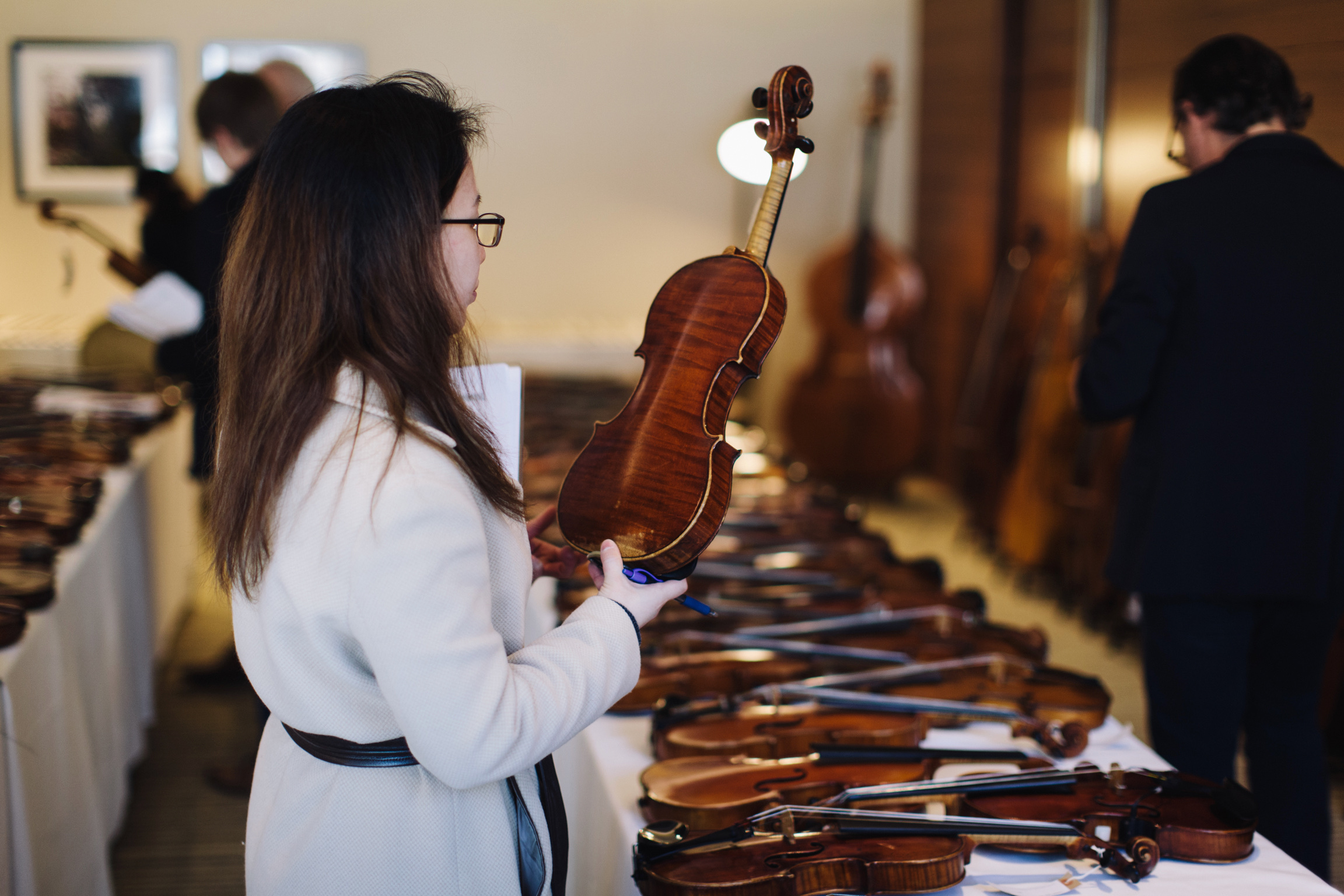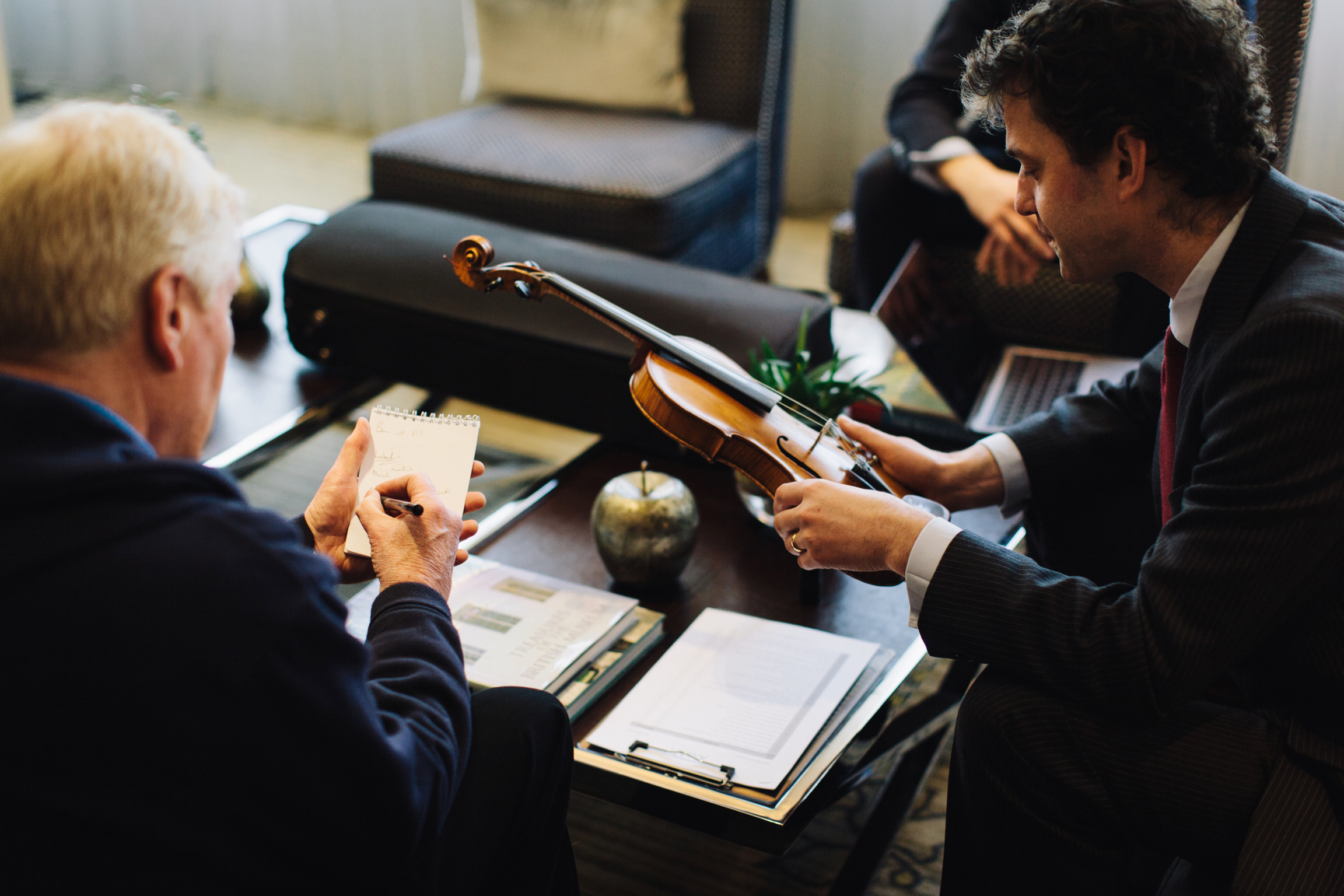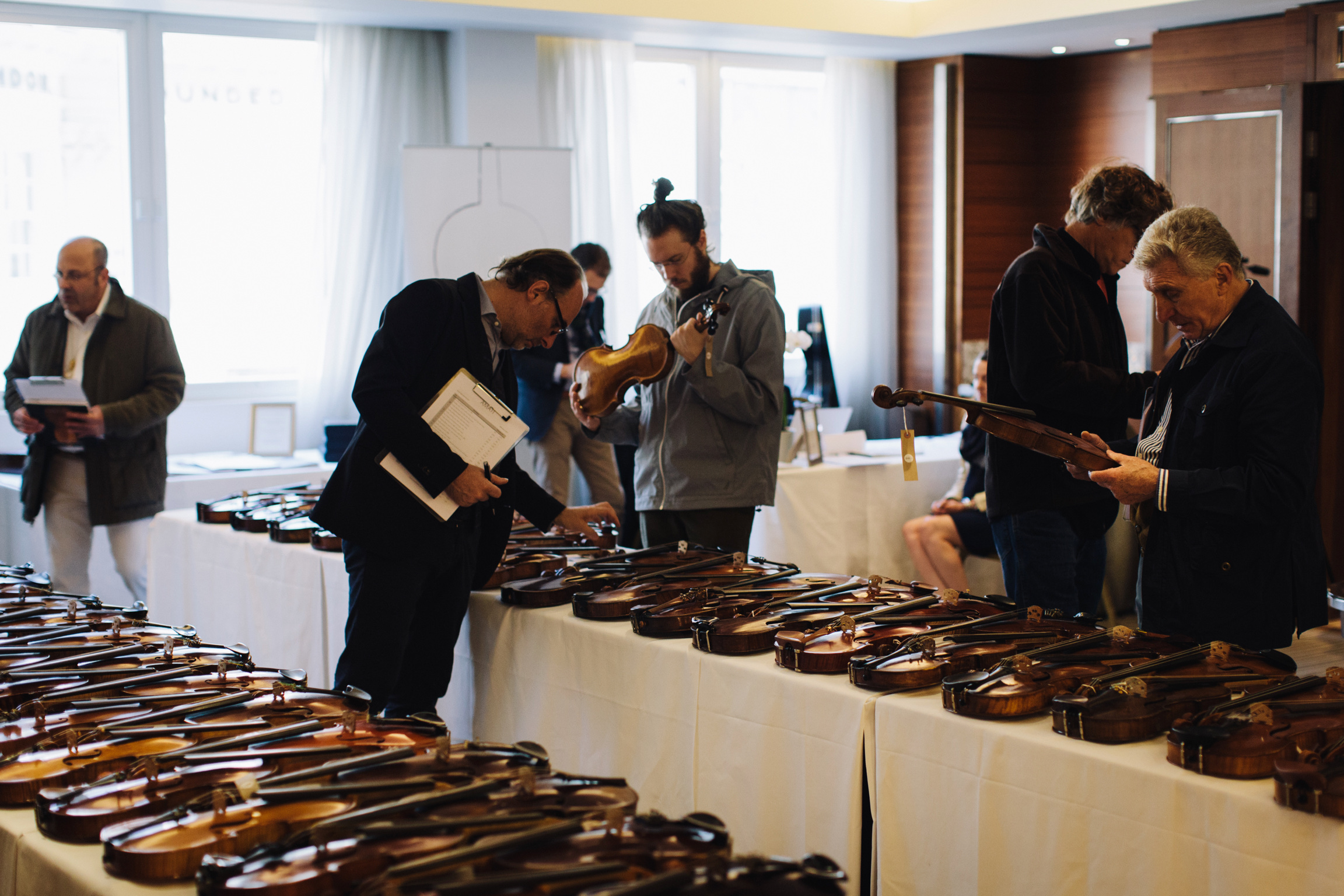The first question any article should answer on how to buy at auction, is ‘Why buy at auction?’ The experience of a traditional auction can be intimidating, and the viewing days are often busy and invariably noisy. These days, however, online auctions have cut out almost all the potential stress of purchasing at auction, and auction companies like Ebay have made the experience commonplace.
Still, there are areas that make newcomers to the auction world uneasy. Why risk six figures on a violin you have barely had time to try? Well, this can be true, but the risks are ‘priced in,’ and there remains the possibility of buying a violin for less than you can at retail prices. Also, in praise of auctions, there is a far greater choice of violins (or violas, cellos and bows) in six months of Amati auctions than you could ever see in most violin dealerships over the same period.
Before the auction
Find somebody you trust to advise you on the instrument, whether it is a violin maker or a dealer (some will provide you with advice for a fee). Violin makers and dealers might spot issues that you hadn’t noticed. They can provide you with advice on attribution and will hopefully give you reassurance on what you are planning to buy. There is no shame in asking for advice and it can save you a huge amount of money.
You can also ask staff at Amati for advice, expert condition reports, and the chance to play the instrument during a physical viewing day. It is in the interest of any auction house to sell the instrument appropriately and they should give you every opportunity to try before you bid.
Buying at auction
This is not as difficult or as dangerous as you may fear. The advice always given is to decide how much you are prepared to pay and not bid above that. The price the auctioneer announces is called the ‘hammer’ price. Be aware that, on top of this figure, auction houses charge a buyers’ commission, so the price you will pay can be a total of the amount announced by the auctioneer, plus the buyer’s commission and VAT (if in the EU) on that commission. If the instrument is imported from outside the EU there can also be import duty charges. Although it is clearly defined, it is worth checking with the auction house to see what extra charges there might be on top of the hammer price.
During an auction, adrenaline and excitement combine and it is rather easy to bid higher than you had originally intended. Do try and keep within your budget. If you miss this auction, there will always be others at Amati, with perhaps an even better violin for you.
For specific information on how to buy at an Amati auction, please read Buying at Auction.
Buying at Auction



